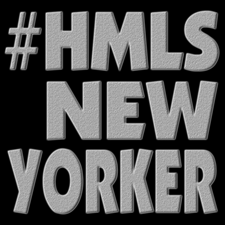“For that period that the protest and the incident occurred in Philadelphia, now certainly those stores were impacted for a brief period. But it’s still early days, and we don’t have all of the information on demographics. But certainly if I look nationally, and I look at regions across the United States, there’s not been […]
Read the rest of this entry »Archive for April, 2018
The Fly Or Die Commerce Report: Starbucks Profits
According to CNBC, “In January [Starbucks] Chairman Howard Schultz said the average Starbucks store makes about $32,000 a week. Using that as a benchmark, 8,000 stores would make about $260 million in that period, or about $36.6 million a day.” Tweet
Read the rest of this entry »Quote Of The Day
“All the pain and frustration, all the mess black folks have to deal with. You have to struggle three times as hard as anybody just to make it through the day.” -Dick Gregory Tweet
Read the rest of this entry »Buy Black Purchase: Capital City Mambo Sauce
Visit their website at: www.shopcapitalcity.com Tweet
Read the rest of this entry »Quote Of The Day
“It was in the New York Times that there are 1.5 million black men missing. They are not in jail. I couldn’t imagine where they were until I saw the movie Get Out.” -Dick Gregory Tweet
Read the rest of this entry »Buy Black Purchase: Pina Colada Cake
Pina Colada Cake Mrs. Maxwell’s Bakery 2700 Atlantic Avenue Brooklyn, New York Tweet
Read the rest of this entry »Quote Of The Day
“The schools we go to are a reflection of the society that created them. Nobody is going to give you the education you need to overthrow them. Nobody is going to teach you your true history, teach you your true heroes, if they know that knowledge will help set you free. Schools in Amerika are […]
Read the rest of this entry »National Geographic Admits To Its History Of Racist Reporting
In the April 2018 “special issue” of National Geographic, named “The Race Issue,” the opening letter from the magazine’s current editor-in-chief, explores the racist history of National Geographic. The editor’s letter contains the following acknowledgments of the publication’s historic racism: • African Americans were not allowed to be members of National Geographic, at least through […]
Read the rest of this entry »Black History Fact Of The Day: The Winnie Mandela Communication Ban
Winnie Mandela “was one of some 150 people the [South African] government prohibited from leaving their towns, speaking to the press, and talking to more than two people at a time.” – Source: National Geographic, April 2018 Tweet
Read the rest of this entry »

